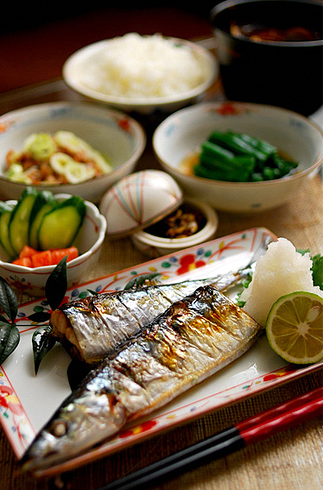
Sanma(Pacific saury) on the market today is a coastal fish by a small boat. Sanma landed in August was 850 tons, the second lowest ever. Looking at the amount of landings over the past three years, 2018 was 8,890 tons, 2019 was 990 tons, and last year 2020 was 170 tons, the lowest ever. The first landed Sanma was 3,780 yen per fish. From now on, Sanma by large boats will be on the market, and the price will be much cheaper, but it will still a poor catch, and last year’s saury catch was 29,566 tons, the lowest ever. Compared to 2008-09, which exceeded 300,000 tons, it is less than one-tenth. It is said that the causes are that due to the recent rise in temperature, the seawater temperature near Japan has risen and Sanma, which prefers cold water, has moved north of Hokkaido, and that large ships from Taiwan and China have advanced into the open sea area and have begun to catch a large amount of Pacific saury. Pacific saury is now changing from cheap and nutritious fish to high-class fish that can only be eaten at high-end restaurants.
今出回っている秋刀魚は小型船による近海魚です。8月に水揚げされた秋刀魚は850tで過去2番目の低さでした。過去3年の水揚げ量を見ても、2018年が8,890t、2019年が990t、そして昨年2020年は170tで過去最低でした。初水揚げの秋刀魚は一尾3,780円だったそうです。これからは大型船による秋刀魚が出回り、値段もうんと安くなりますが、それでも不漁であることは変わらず、昨年のサンマ漁獲量2万9566トンと過去最低に落ち込みました。30万トンを超えていた2008~09年に比べると10分の1以下にすぎません。最近の気温上昇で日本近海の海水温が上昇し、冷水域を好む秋刀魚が北海道以北に移動したこと、公海域には台湾や中国の大型船が進出し、秋刀魚を大量に漁獲するようになったことが原因だとされています。今や秋刀魚は安くて栄養豊富な魚から高級料亭でしか食べられない高級魚になりつつあります。
